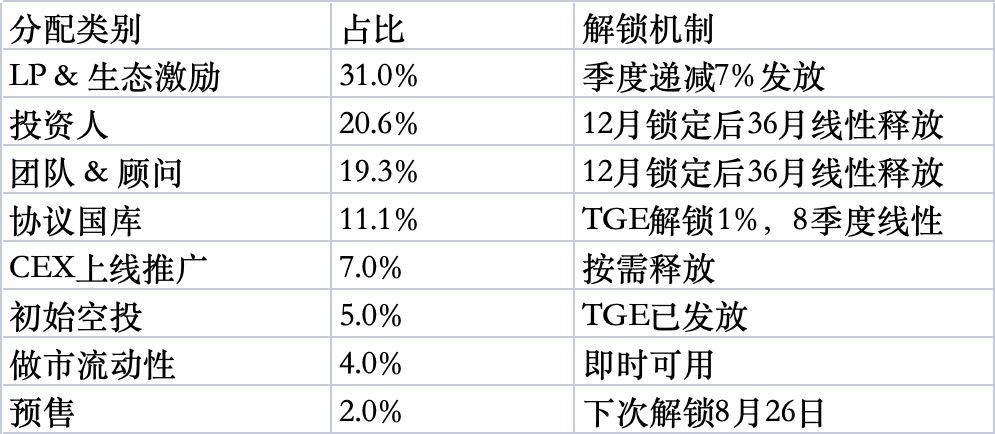Continuing from the previous article, let's discuss the data for $HUAM
First, let's talk about the development status analysis of the HUMA token
1 TGE and Key Time Nodes

2 Fundamental Data (2025-07-28)
Market Cap: $68.76M (Circulating Supply 1.73B / Total Supply 10B)
FDV: $396.98M
24-hour trading volume: $42.82M
Number of holders: 18,612
Holder Distribution:

3 Token Economic Model and Value Capture Mechanism
Total Supply Allocation (10 billion tokens):

4 Key Unlocking Nodes
Unlocking soon: August 26, 2025, 1.26% (approximately 200 million presale tokens)
Season 2 Airdrop: Approximately 90 days after TGE, releasing 2.1% (approximately 210 million)
5 Core Uses of Tokens and Staking Mechanism
1. Governance Function Staking HUMA to gain voting rights, deciding on protocol fee rates, incentive release parameters, and other key governance matters. huma blog
2. Staking 2.0 Dual Mode 👇👇👇

Deposit Amount Mechanism: Each staked HUMA allows for a deposit of 0.04 USD of USDC, directly binding token demand with cash flow earnings
3. Feathers Points System 👇👇👇
Classic Mode: 1×/3×/5× Feathers Multiplication
Maxi Mode: Up to 10× Feathers
Points affect PST revenue distribution weight
4. ve-HUMA Design (Launch in Q3 2025)
The longer the lock-up period, the greater the voting weight
Determines liquidity caps, reward emissions, and Protocol Fee allocation
Together with Feathers and PST, it forms a three-layer incentive system
From here, it can also be seen that @Huma Finance 🟣 is genuinely doing work
6 Sustainability of Value Capture
Sources of Revenue 👇👇👇
Real Cash Flow: Classic/Maxi pool earnings come entirely from on-chain merchant fees, not pure token emissions
Demand Driven: Staking thresholds and deposit amounts are directly linked, real earnings drive buying pressure
Supply Control: LP incentives decrease by 7% each season, while also adjusted by governance
Risk Factors: 👇👇👇
High Concentration: The top 20 holders control 85% of the supply
Unlocking Pressure: Team + Investors account for 39.9%, to be gradually unlocked over the next 3 years
Supply Scale: A total of 10 billion is relatively large and requires strong demand support



